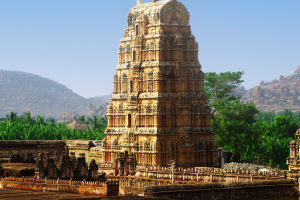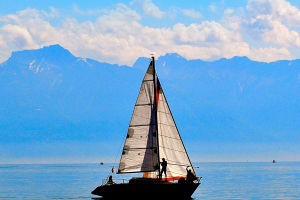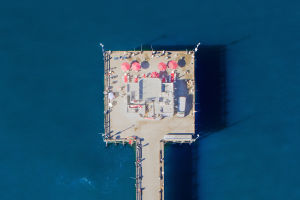Welcome Lykkers! India is renowned for its stunning landscapes and diverse topography, and its mountain railways are a testament to both engineering marvels and scenic beauty.
These railways, many of which are UNESCO World Heritage Sites, offer a unique experience of traversing through majestic hills, lush valleys, and picturesque towns.
1. Darjeeling Himalayan Railway (Toy Train)
Located in West Bengal, the Darjeeling Himalayan Railway, often called the "Toy Train," is one of India’s most iconic mountain railways. This narrow-gauge railway, a UNESCO World Heritage Site since 1999, was built between 1879 and 1881 to connect New Jalpaiguri to Darjeeling.
The 88-kilometer route takes passengers on a captivating journey through tea gardens, dense forests, and quaint villages, with the mighty Kanchenjunga serving as a stunning backdrop. The Batasia Loop is a highlight of the trip, offering a panoramic view of the surrounding hills. The nostalgic steam engines and charming coaches make the ride a memorable one.
2. Kalka-Shimla Railway
Another UNESCO World Heritage Site, the Kalka-Shimla Railway, is a narrow-gauge railway in Himachal Pradesh. Completed in 1903, it was designed to provide British officials with access to Shimla, then the summer capital of British India.
This 96-kilometer stretch of railway is renowned for its engineering brilliance, boasting 102 tunnels, 864 bridges, and over 900 curves. The train chugs through dense pine forests, rolling hills, and picturesque villages, offering travelers breathtaking views. The Barog Tunnel, the longest on the route, is a standout feature. The journey is especially magical in winter when the landscape is blanketed in snow.
3. Nilgiri Mountain Railway
Nestled in Tamil Nadu, the Nilgiri Mountain Railway connects Mettupalayam to Udhagamandalam (Ooty), one of South India's most popular hill stations. This railway, also a UNESCO World Heritage Site, was built in 1908 and features the only rack-and-pinion system in India to navigate the steep gradients of the Nilgiri Hills.
The 46-kilometer route is a feast for the senses, passing through lush tea estates, dense forests, and cascading waterfalls. The train climbs to an altitude of 2,200 meters, offering a cool and refreshing journey. The vintage steam engine and the rhythmic sound of the train add to the charm of the experience.
4. Matheran Hill Railway
Located near Mumbai, the Matheran Hill Railway is a lesser-known gem that connects Neral to the scenic hill station of Matheran in Maharashtra. Built in 1907, this narrow-gauge railway spans 21 kilometers and is a popular getaway for city dwellers.
The train ride takes passengers through dense forests, deep gorges, and panoramic viewpoints, with monkeys often playfully accompanying the journey. Matheran, Asia’s only automobile-free hill station, offers a serene retreat from urban chaos. The toy train is particularly popular during the monsoon season when the hills come alive with waterfalls and greenery.
5. Kangra Valley Railway
The Kangra Valley Railway in Himachal Pradesh is a hidden treasure that connects Pathankot to Joginder Nagar. This 164-kilometer narrow-gauge railway offers spectacular views of the Dhauladhar mountain range, lush valleys, and terraced fields.
Unlike other mountain railways, the Kangra Valley Railway is less commercialized, making it ideal for travelers seeking tranquility and unspoiled beauty. The route passes through 971 bridges and 2 tunnels, with stations like Palampur and Baijnath providing glimpses of Himachal’s cultural heritage.
India’s mountain railways are not just a means of transport but an experience in themselves. They offer a perfect blend of natural beauty, historical significance, and engineering brilliance. Whether it’s the misty charm of Darjeeling, the snowy landscapes of Shimla, or the lush greenery of the Nilgiris, these railways promise a journey to remember. A ride on these trains is a must for travelers seeking to explore the heart of India’s hill stations in a unique and enchanting way.


